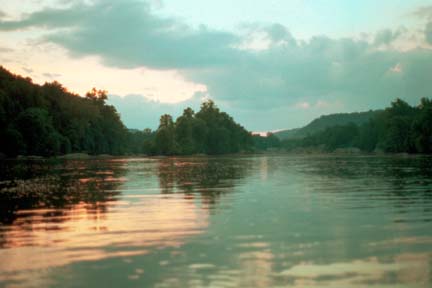

The Susquehanna River, one of the largest rivers draining the central Appalachian Mountains, has incised deep into bedrock of the piedmont province over the past several million years. Several level of erosional terraces (relatively level bench or steplike surfaces) are preserved within the lower reaches of the Susquehanna River. These terraces represent episodic periods of incision presumably resulting from changes in climatic conditions over the past one million years. The rate at which passive margin rivers erode bedrock, leaving terraces, and the ultimate causes of this episodic erosion are poorly understood, because until recently, direct dating of such surfaces has not been possible.
With this study, we will identify, map and date at least three levels of terraces within Holtwood Gorge using cosmogenic isotopes, 10Be and 26Al. When a rock surface is exposed to cosmic rays (sunlight) following the erosion of overlying material, these radioactive isotopes are produced in quartz (SiO2) within the uppermost layer of rock. By measuring the abundance of 10Be and 26Al in samples collected from such surfaces, we will calculate the amount of time that has passed since each terrace level was first exposed to cosmic rays. We will compare terrace ages to otherwise documented Quaternary climate variations to see if correlations can be drawn between terrace exposure ages and climate.
Holtwood Gorge Location Map |
Sample Site Info Sheet |
Sample Site Location Map |
Terrace Levels |
Gorge Cross Sections |
Pictures |